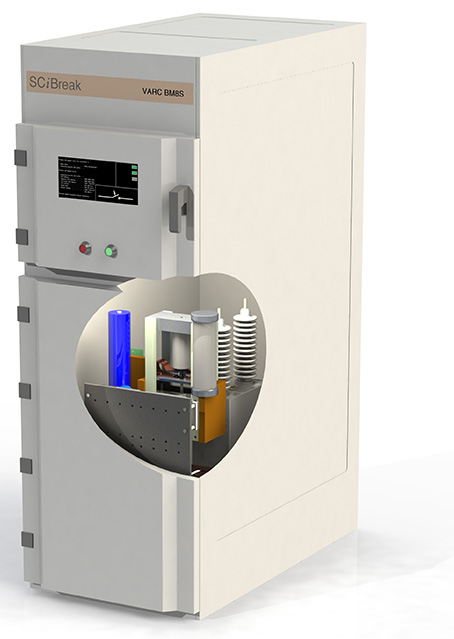SciBreak develops superfast circuit breakers for the the railway network

SCiBreak, a start-up with roots in Electric Power and Energy Systems at KTH, has been featured in the magazine Ny Teknik. The article focuses on the fast circuit breakers SCiBreak developed for the railway network.
We asked Associate Professor Staffan Norrga at SCiBreak some questions about the article.
What is SCibreak?
“SCibreak is a Swedish company started in 2014 as a spin-off from KTH. We are developing technology for protecting electric power grids based on a patented concept. We are located in Kallhäll outside Stockholm.”
Could you tell us a bit about the circuit breakers that were featured in the article in Ny Teknik?
“Trafikverket needs to upgrade the power supply for the Swedish railway network to allow for more railway
 traffic. However, this also means that the fault currents, i.e. the currents that flow in case of a short-circuit fault, may rise beyond the allowable limits. This presents a danger for destroying equipment. The circuit breakers to be provided by SCiBreak to Trafikverket can interrupt fault currents much faster than existing state-of-the-art breakers. This means that the power infeed can be upgraded at reasonable cost without unnecessary risks.”
traffic. However, this also means that the fault currents, i.e. the currents that flow in case of a short-circuit fault, may rise beyond the allowable limits. This presents a danger for destroying equipment. The circuit breakers to be provided by SCiBreak to Trafikverket can interrupt fault currents much faster than existing state-of-the-art breakers. This means that the power infeed can be upgraded at reasonable cost without unnecessary risks.”
What problems will the technology solve in the future?
“We see several potential applications for our circuit breaker technology. One is high-voltage direct-current (HVDC) power transmission, where affordable circuit breakers have not existed this far. HVDC is a crucial technology for integrating renewable energy sources, such as wind power, into the power grid. Our breaker technology can allow for the creation of HVDC grids, which would increase reliability and reduce equipment cost, compared to point-to-point links which currently prevail in this field.
The connection of ever more renewable and distributed energy sources to the conventional AC grid also creates problems in that it increases the short-circuit levels. Also here our technology can solve grid protection problems.”

